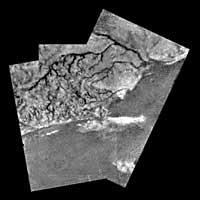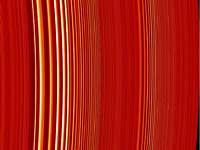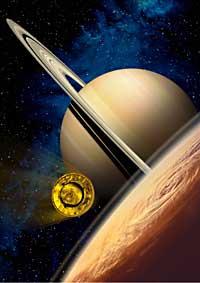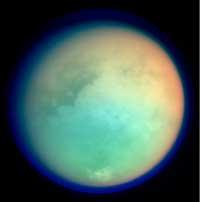Huygens exploring Titan

Saturn is a special planet. Starting with the search, we would find something that makes all the planets of our Solar System special, but certainly Saturn is the planet that we most easily identify with the image. And the reason is clear: Saturn is a ringed planet.
Saturn is surrounded by beautiful rings and has 31 satellites, i.e. 31 moons. No wonder Saturn has fascinated many astronomers. But keep in mind that the rings of Saturn and other elements in orbit are not separated at first sight, and not only that, but a relatively good telescope is also needed. Therefore, although it was first observed by telescope by the famous Galileo, in 1610 it did not see rings. However, he saw a planet that changed its appearance.
It took almost sixty years to realize that the planet did not change its appearance, that it had a ring and that astronomers' telescopes received a different image according to their inclination. To this conclusion came the Dutch Christian Huygens.
Huygens saw the rings of Saturn and its largest satellite: Titan. At that time only the satellites of Jupiter were known, besides the Earth Moon, but it was not named Titan until two hundred years later.

The discovery of the Saturn ring augurs the interest of astronomers, as it was the XVII. In the eighteenth century many astronomers were installed looking at Saturn. Among them, the Italian Giovanni Domenico Cassini was fascinated. In astronomy he discovered, among others, the other four satellites of Saturn, which later received the names of Tetis, Dione, Rea and Japeto, and the greater distance between the rings of Saturn.
Therefore, from the historical point of view, it is no wonder that the spacecraft destined for Saturn's research was called Cassini-Huygens. The spacecraft is divided into two parts, including the name of the Dutchman who discovered the ring, the Huygens probe, and the Italian who spent his life observing Saturn, the blind ship Cassini.
Long journey to Saturn
Cassini-Huygens has taken several years to reach the Saturn area. The journey lasted seven years, from October 1997 to December 2004. And on December 25, Christmas Day, the two chapters were distributed. Since then each section has done the corresponding work: Huygens has gone down to the Titane and sent the collected data to Earth through Cassin.

As has been said, Titan is the largest moon in Saturn, indeed, after the Ganymede of Jupiter, the largest satellite in our solar system. It is also larger than the planet Mercury and Pluto. But Titan has another special feature: it is the only satellite that has atmosphere in our solar system.
For Huygens has sought in Titan. He enters his atmosphere and lands on Titan. Along the way he took photos, measured the speed of the wind, took data on the chemical composition of the atmosphere... and sent the sound of the wind to the space agencies, which can be heard on the internet, in the atrium of the ESA.
Success or failure?
Cassini-Huygens is a joint mission of the three space agencies: European (ESA), American (NASA) and Italian. The work has been distributed and the Huygens probe has been under the responsibility of ESA and Cassin has been at NASA.
Those at ESA are very satisfied with the work done by Huygens, they say it has achieved great success, but those at NASA disagree. The problem is that Huygens has sent fewer photos than they expected: As I went down to Titane I had to take and send some seven hundred photographs, but only half, 350, have been collected on Earth. They don't know exactly where the error occurred, but it seems to have been a mistake: a camera with probes was not ordered to take pictures. How would it work?

However, these photographs are also available on the Internet. They are not of very good quality (it must be borne in mind that Cassini-Huygens does not have the most cutting-edge appearance of the moment, since about seven years ago), but at least serve to see the appearance of the skin of Titan. And experts have been able to show what they expected: in the photos you can see the river basins, so if they are or have been at some point the rivers of Titan.
But it is too early to draw conclusions. With the physical-chemical photos and data they have received so far, scientists have work for months, or perhaps for years. We must wait patiently for the conclusions of these correctly interpreted data. But the mission is not over, now it touches Cassini. To see what tells us about Saturn and the other larger satellites of Saturn.
Published in 7K.
Buletina
Bidali zure helbide elektronikoa eta jaso asteroko buletina zure sarrera-ontzian











